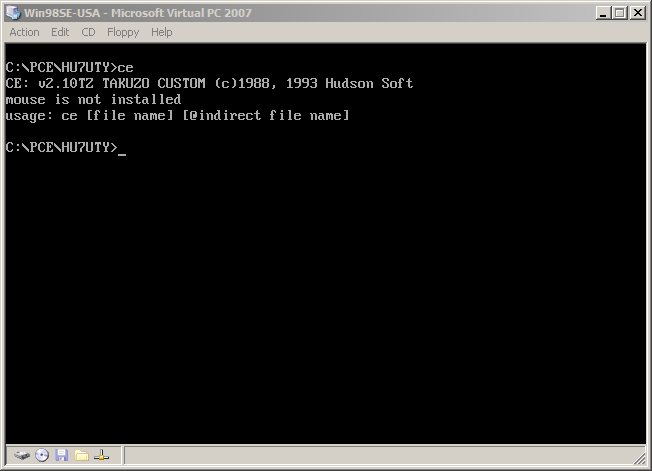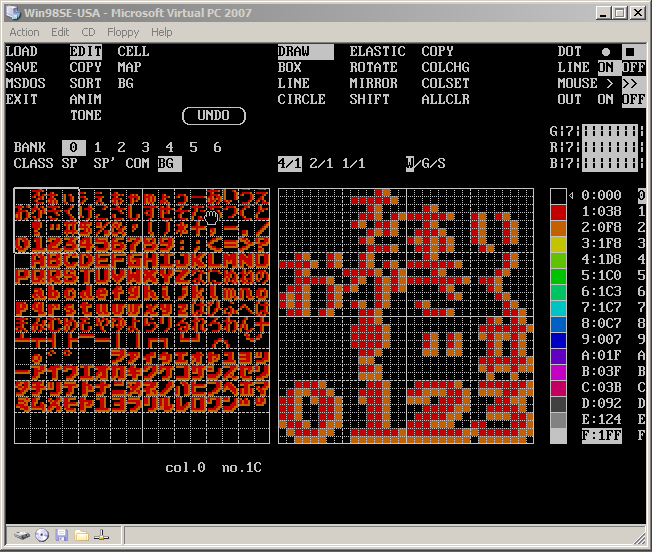I don't know about all companies, but the official dev systems were connected to PC-9801 computers. Who knows how they handled the colour limitations of computers in the '80s...? But here's a link and video footage to give some hints:
http://www.chrismcovell.com/secret/PCE_1989Q4.html#pcedev
https://youtu.be/YDgEMeubib4?t=466
The Making of Addams Family:
http://archives.tg-16.com/TURBOPLAY/TP-09-06.jpg
http://archives.tg-16.com/TURBOPLAY/TP-09-07.jpg
http://archives.tg-16.com/TURBOPLAY/TP-09-08.jpg
http://archives.tg-16.com/TURBOPLAY/TP-09-09.jpg
Thanks guys, those were all really interesting!
I've never seen one of those devkits in use.
Weren't Hudson's offices a mess!

Am I silly for thinking this is the same graphics editor?
(2) Was the graphics editor software ported? Emulated? Is the article mistaken? (Is ICOM actually is using PC-98/X6800)?
You are silly but for unrelated reasons. ;-D
It probably is the same software, and I think Hudson made MS-DOS versions of their software for Western developers.
I finally dug out the docs ... yep, it was ported for Western developers.
It ran in DOS on an IBM PC/AT, and had a ISA card with an 8255 chip on it for interfacing with the Hu7 devkit.
The graphics editor described is the same one thats in all those pictures, and it supported displaying the sprites/maps on the TV screen that was connected to the devkit.
So that's how Japanese developers were able to see more than the one 16-color palette as they were creating their background maps.
That would probably be a bit difficult to work with, but, as-the-saying-goes, where there's a will.
It would certainly explain why ICOM were creating their background maps on a Mac II with its 256-color screen and Electronic Arts' Studio/8, and then running everything through their own conversion tools.
Do any of the original Hudson graphics tools exist?
Yes! I think they were found in the ISO of ACD Art of Fighting or somesuch.
Ah ... yep ... some-kind-soul-here gave me a dump of those files a while back.

I hadn't looked at them seriously because I thought that they were PC-98 programs.
But, just-in-case, I fired-up a copy of DOS in VirtualPC 2007, and as Chris presumably already knows ...


Wow!

With a 1993 version date, this is probably one of the final DOS versions of the editor before Hudson made their Windows editor (that we see as the "AGE" editor in the PC-FX SDK).